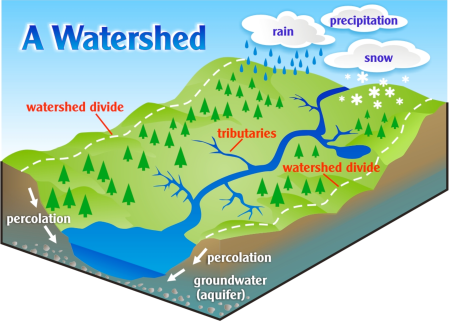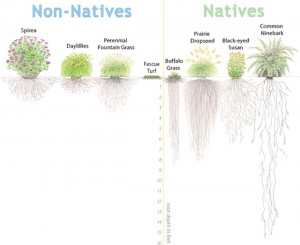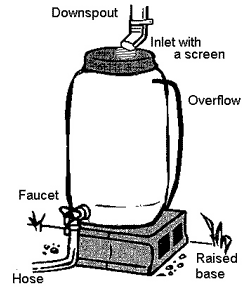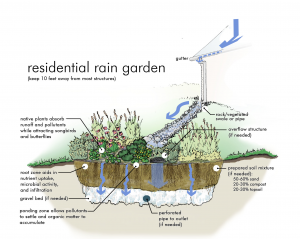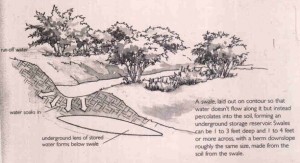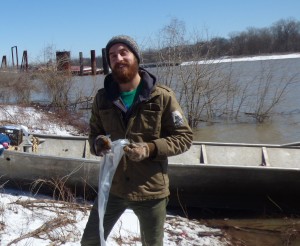7 Ways to Reduce Your Land’s Impact On Flooding
Since floods can take place on a massive scale, it may be difficult to trace how the choices we make on our own land can contribute to flooding. However, owning land means having a relationship to rainwater flow; “Everyone lives in a watershed,” as the saying goes.
Making a difference in mitigating local flooding or a massive Mississippi River flood is not exclusive to large agricultural areas. With the continual expansion of urban centers into rural areas, so too has followed the increase of impermeable surfaces and lawns. No one can predict when something like a flood is going to happen. But with this being said, it is best to be safe than sorry. Sites like Seal with Ease don’t just exist for no reason! It may be in your best interest to check it out, in the hopes of finding a way of preventing damage to your floor surfaces in your home. Something homeowners don’t always think about is how their deck flooring can be damaged by floods. Often, with a long length of time exposed to water, wooden decks can experience wear. Luckily, plastic decking boards are now available to keep the beauty of your deck but prevent the wear of your wooden ones due to excessive water exposure.
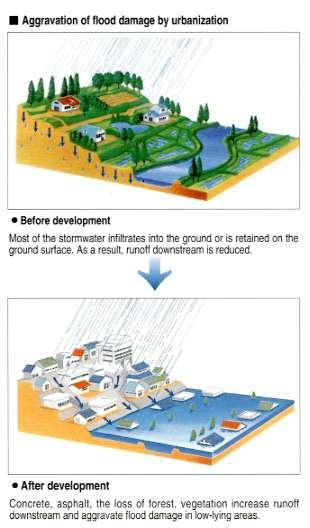
“The Primacy of Water” is a concept in Restoration Ecology that views water as the chief ecosystem engineer, and also the most important element to consider when working in the landscape. Water is a master cleanser, washing away anything easily soluble and flushing litter downstream. Any product you use outdoors will likely be rinsed right into the nearest storm drain. Therefore, when excess fertilizers, pesticides or herbicides are used on a lawn, that excess flows into stormwater systems, and ultimately into natural areas like streams and rivers. The same goes for any liquid that leaks from an automobile, a/c, or any other outdoor appliance. Many of these substances are harmful and toxic, like heavy metals and petrol-chemicals, and can persist in the environment for many years. We can cultivate an awareness of the right ways to utilize products like these in order to prevent any negative influence on flooding and water quality and perhaps even make a positive impact.
Home owners and land owners are in an opportune position to reduce the impact their land has on flooding and improve water quality. There are many water management tools and techniques one can employ which are considered Best Management Practices (or BMP’s).
Plant/Tree Cover
- Increase land covered by plantings – especially native plants.
Plant cover increases infiltration of rainwater into the ground. Native plants require less care, have deeper roots than traditional grass and support wildlife. - Plant or preserve trees. Imagine a raindrop forming in the sky, then falling multiple miles, crashing against the earth. Now one raindrop may not seem like a lot, but when you have a whole sky-full of them in a large rain event, the effect is compounded. The collision of these raindrops can dislodge soil particles, splashing them everywhere, leading to erosion. When trees are left present in the landscape, and allowed to grow tall, their multi-layered canopies act as shock absorbers to the fast falling raindrops, and help slow the infiltration rate of stormwater.
- Let it Be – Leave things like lawn clippings, leaves and debris on your lawn. Usually seen as refuse – these natural materials are intrinsically linked to the replenishment of nutrients, protect the soil itself, as well as slow down water to better infiltrate soil and retain water. When organic matter residue is left on the soil surface it shields the vulnerable top layer of soil and it even requires less work on our part to allow this to happen, making it truly sustainable.
Water Harvesting - Keep rain in Rain barrels for later use! Looking at the ways we build our environment, water can be harvested right from the gutters of the roof. It can be a very dangerous job for a homeowner to clear out all of the water and debris that has been lodged into their guttering. Many different roofing contractors from across the country, such as this roofing austin tx company will be able to inspect and repair or replace any parts of your roof and guttering that no longer work effectively. This method will also allow you to harvest your water so that it doesn’t create any exterior damage to your home. There are other things that you can do to harvest your water. A rain barrel is a popular way to store water for later, and consists of funneling your gutter so that it fills a barrel with the rainwater.
- Plant a rain garden. Rain gardens are typically placed in a lower section of the property that receives more water than average. A rain garden is a depression in the ground that employs native plants to help absorb rainwater and enhance the landscape.
- Use swales to hold and transport water. Swales are swell mini ditches that move water across the contours of a landscape and allow time for it to penetrate the ground. They can be made at any size/scale based on the context and setting and are considered a passive form of catchment because it requires no active maintenance or energy input once installed.
Water Management - Use permeable pavement or pavers in landscaping. You can create nice walkways or boarders with hardscaping that will allow the movement of stormwater through the surface.
Clearly, there is much to be aware of when it comes to the effects of water and rainfall, and how it relates to the land around you. However, we can observe most of these design principles in nature’s kingdom. Mother Nature abhors bare soil and monocultures, so if you look to the nearest wild areas for an example, these things will rarely be found. What can be found though is a natural inclination for physical systems to hold onto water for as long as possible, thereby reaping the rewards water has to give. If we follow the age-old examples found in nature, we are sure to be a shining representative of our watershed, and our way to mitigating floods of the Mighty Mississippi!
Jimmy Greene, 1 Mississippi Outreach Assistant
Join our
COMMUNITY
And Get a Free E-book!
When you sign up as a River Citizen you’ll receive our newsletters and updates, which offer events, activities, and actions you can take to help protect the Mississippi River.
You’ll also get our free e-book, Scenes From Our Mighty Mississippi, an inspiring collection of images featuring the River.
Step 1
Become a River Citizen
Yes! The River can count on me!
I am committed to protecting the Mississippi River. Please keep me informed about actions I can take to protect the Mississippi River as a River Citizen, and send me my free e-book!, Scenes From Our Mighty Mississippi!
Step 2
LEARN ABOUT THE RIVER
We protect what we know and love. As a River Citizen, you’ll receive our email newsletter and updates, which offer countless ways to engage with and learn more about the River. You can also follow us on Instagram, Facebook, X (Twitter) , and YouTube, where we share about urgent issues facing the River, such as nutrient pollution, the importance of floodplains and wetlands, and bedrock legislation such as Farm Bill Conservation Programs.
Step 3
Take Action
There are many ways you can jump in and take action for a healthy Mississippi River. Our 10 actions list includes simple steps you can take at any time and wherever you are. Check out our action center for current action alerts, bigger projects we are working on, and ways to get involved.

